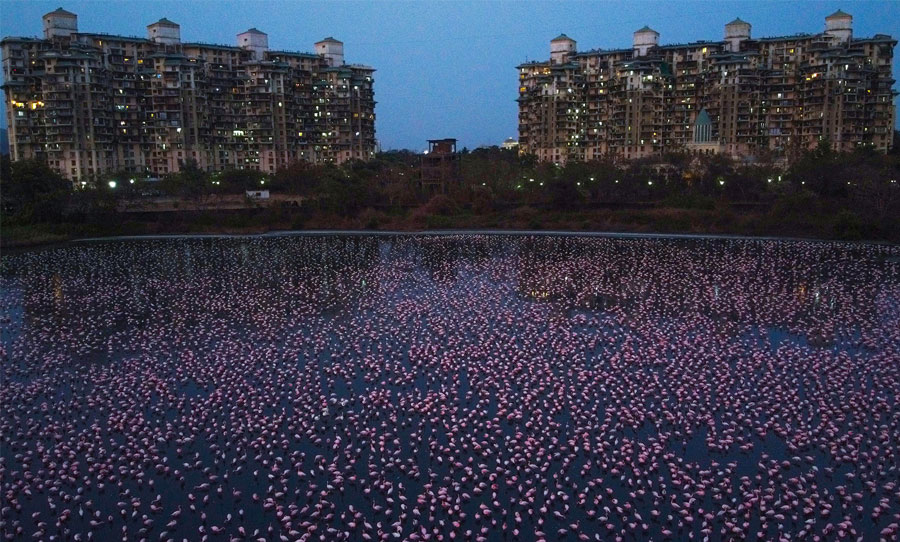COVID-19 has brought out a lot of interesting developments around the world, particularly in India. Amongst corona-warriors, stunning views of the Himalayas, and an increase in the sale of *cough* essential items, the country has now seen a massive rise in its migratory flamingo population – three times to be exact!
Pictures of this residential wetland in Mumbai have gone viral, showing the elegant birds at work. According to authorities, 150,00 flamingos have flocked to the city, with the Bombay Natural History Society (BNHS) stating that “lower human activity has created ideal conditions for foraging in wetlands”.

Single and ready to ‘mingo. The greater and lesser flamingos flock to Mumbai every year to breed and feed, however, COVID has caused their numbers to skyrocket.
Of course, authorities had to ruin everyone’s fun by revealing the other, less wholesome truth behind Mumbai’s pink-festation. Turns out that an increase in sewage (ew) has been a great fertiliser for the blue-green algae that the flamingos snack on.
As nasty as these algae seem, we actually owe a lot to the sewage-loving sludge. Not only is it a delicious treat for our feathered friends, but, as per a quick Google of the infamous question “why are flamingos pink?”, the algae is in fact what gives the birds their stunning rose colouring.

In an interview with The Hindustan Times, Mumbai local Sunil Agarwal voiced his hopes of the event prompting fellow residents to protect the wetlands under conservation agreements.
“The lockdown will at least prompt people to focus on what is around them, which they had been taking for granted, and hopefully this site will be declared a flamingo sanctuary soon,” he said.


